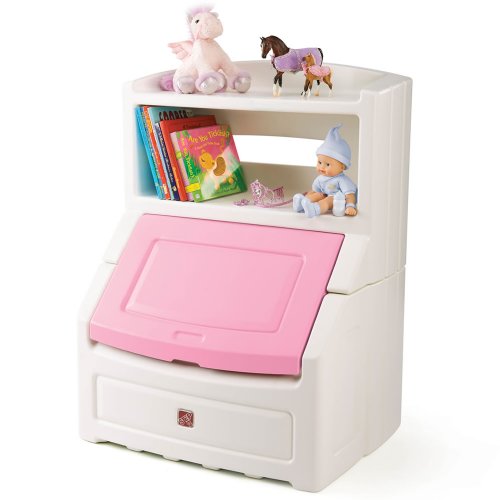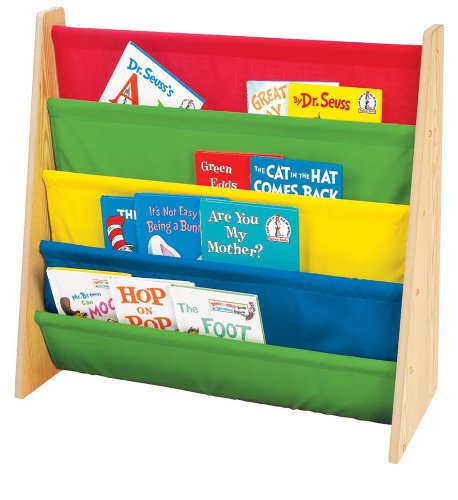It's hard enough worrying about gigabytes and terabytes. Not to mention the incredible intricacies involved with converting your existing database management architecture to a storage area network.
Bookcase With Storage Bins
Indeed, the last thing you need is to waste precious time searching for missing hardcopy documents two minutes before the start of a big meeting.
Bookcase With Storage Bins
Well, relax. I've consulted some of the world's foremost authorities on workspace organization - as well as IT professionals and they've come up with smart and proven suggestions that will help you save time every day by reclaiming your workspace.
To follow are some easy tips to make sure your high-tech work area gets organized and stays that way:
o Is that a desk under there?
Your desk is ground zero for efficient organization. Fact is, a cluttered desktop can really take a byte out of an IT person's productivity. Howard Pomeroy, Information Systems Manager for TLSI, a developer of military surveillance equipment and components based in Farmingdale, New York, suggests the following: "Dozens of reports come across my desk every week, the most important thing is to not let them build up into unmanageable piles...the solution is a portable desktop file that can store reports temporarily until you have time to move them into the permanent file."
Setting up a desktop file is simple, and many such products come complete with file folders and indexing tabs plus a plastic holder to keep everything neatly organized in the corner of your desk. To make the most of your desktop file, assign a different day of the week to each folder and drop-in project documents as the week proceeds, then at the end of week, transfer the documents to your permanent file cabinet.
o Stake a claim on your territory.
One of the best ways to boost your daily productivity and stay organized is to create a sense of privacy around your workspace by establishing boundaries.
Many IT people find themselves working in crowded "bullpen-style" work areas where people are literally on top of each other. It's important to seclude your workspace and claim it as your own, so that you can better concentrate on your work.
One idea for doing this is to strategically place a bookcase or a floor plant near your desk to provide some privacy. Another idea is to "build walls" around your work area, perhaps by stacking binders at the corner of your desk. This will accomplish two things: you can organize paperwork in the binders and keep them from cluttering your desk, and at the same time, block off your territory to create a secluded atmosphere.
o Make sure it's all systems go.
You have tons of digital files that are safely stored on a myriad of backup devices including everything from CDs to tapes. However, just like the non-tech world, you also have a need to keep track of old fashioned hardcopy. And that's where a good filing system is worth its weight in gold.
The emphasis in creating and maintaining a filing approach that works best for your enterprise is to establish a coordinated system of filing and stick to it. Filing experts from such organizations as NAPO (National Organization of Professionals Organizers) recommend alphabetic filing systems because they're the simplest to understand and the easiest to maintain.
In an alphabetic filing system, you assign filing categories by name or subject, creating filing tabs that correspond to the first letter of each name or subject. The key to organizing your files most efficiently however is to make certain you don't stray from the system by, perhaps, arranging some files alphabetically and some numerically. Keeping your filing methods consistent will help you accomplish the most vital thing in good recordkeeping: finding what you want, quickly.
o Color your world.
In addition to utilizing a simple alphabetic filing system that everyone in your company can understand, the files themselves can be made instantly more organized by using colored folders. Makers of file folders offer them in more than a dozen color choices, so you can assign a different color to each of your filing categories.
For example, you might store "technical specifications" in red folders, "supplier information" in blue folders, and "follow-up data" in green folders. Studies by color experts have proven that by categorizing your file subjects into different colored folders you can actually reduce the time it takes to find individuals files by 50%.
o Put labels on things.
Using labeling tools and self-stick labels in your workspace is one of the most intelligent things you can do to keep yourself better organized. Labels are especially effective when used with your filing system to create indexing tabs. The reason is, labels created by today's advanced (and relatively inexpensive) electronic labelmakers are neater, more colorful, and much easier to read than handwritten tab headings.
Of course, there are many other uses for labels in your work area. The people who know labeling best, DYMO - makers of LabelWriter® Label Printers - suggest creating labels for drive bays on computers, shelves in the supply closet, cabinet drawers, video tapes, and just about anything else that needs to be organized. Electronic labelers are also great for printing your own address and shipping labels. When creating mailing labels, you can even download contact information from such programs as ACT! and Microsoft® Outlook, then print the information directly onto your labels without re-typing your contact names or addresses.
o Gain some shelf control.
Another important aspect of reclaiming your workspace is to keep shelves neat and clutter-free. You have to admit, at times it can be very tempting to just throw documentation manuals and other items onto a shelf with little regard for how they're organized. However, when you have to locate a reference manual, chances are you'll waste time and frustrate yourself searching for the manual you need.
William Nunoz, Telecom Development Director for Advanced Communications Systems, Inc. of Fort Lee, New Jersey, recommends the simple solution of standing your manuals upright on the shelves using bookends and arranging the manuals in alphabetical order. "Alphabetizing my reference materials on the shelf took a few moments in the beginning, but once I got everything arranged, I found it so much easier to look-up what I needed when I needed it."
o Take your show on the road.
Staying organized is not necessarily confined to your workspace. Many times, IT professionals need to attend offsite meetings and trade shows. Instead of just tossing documents and other written materials into your briefcase, take along a "mobile" filing case specifically designed to organize paperwork when you're on the go. Many of these easy-to-carry filing products are designed with individual pockets inside, so you can separate such things as papers, CDs and Zip disks into quick-access sections.
o The bottom line? You'll make work, less work.
The tips listed above are only a few of the many ways you can organize your high-tech work area. But keep in mind that reclaiming your workspace should be viewed not as a task, but as a means to an end - that is, a way of making your professional life easier and less stressful by eliminating the difficulties that a messy working environment can cause.
Is a Messy Workplace Causing Technical Difficulties?
Bookcase With Storage Bins
Tv Mounts Car Toddler Bed













